Abstract
Extracts of soots obtained from various sources were applied to the skin of mice in an effort to identify carcinogens in these mixtures and to link these materials to the etiology of human cancer. Samples of coal chimney soot, coke oven materials, industrial carbon black, oil shale soot, and gasoline vehicle exhaust materials have been examined by this method. The studies reported here have been constructed to compare the carcinogenic and tumorigenic potency of extracts from various particulate emissions: coke ovens, diesel and gasoline vehicles and a roofing tar pot. Automobile emission samples were obtained by collecting the diluted and cooled exhaust on Teflon-coated glass fiber filters. Coke oven and roofing tar samples were particulate emission samples collected by impaction and filtration. The organic components associated with each of the particles were extracted with dichloromethane and dermally applied to SENCAR mice. All agents were applied as tumor initiators by using a five-dose protocol. Selected extracts were also applied as complete carcinogens and as tumor promotors. Statistical analyses of the resulting tumor data were performed by using nonlinear Poisson and probit models. The results from these experiments provide a suitable data base for comparative potency estimation of complex mixtures.
Full text
PDF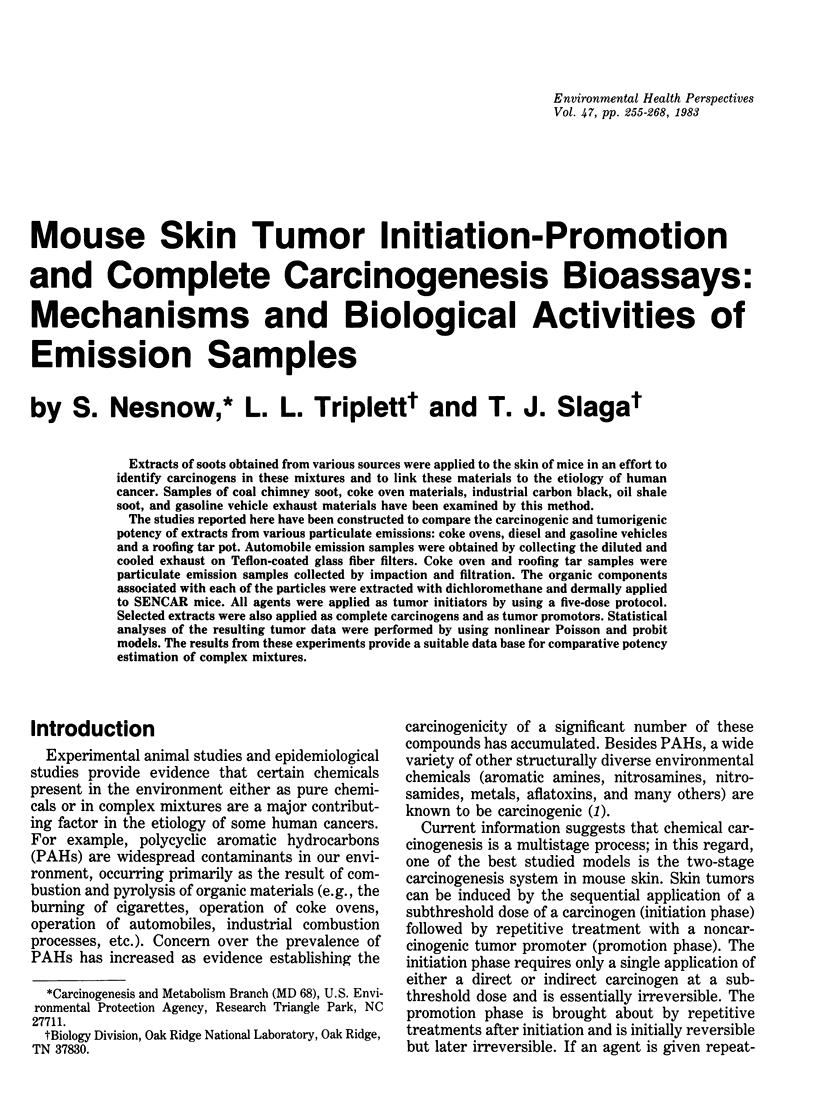
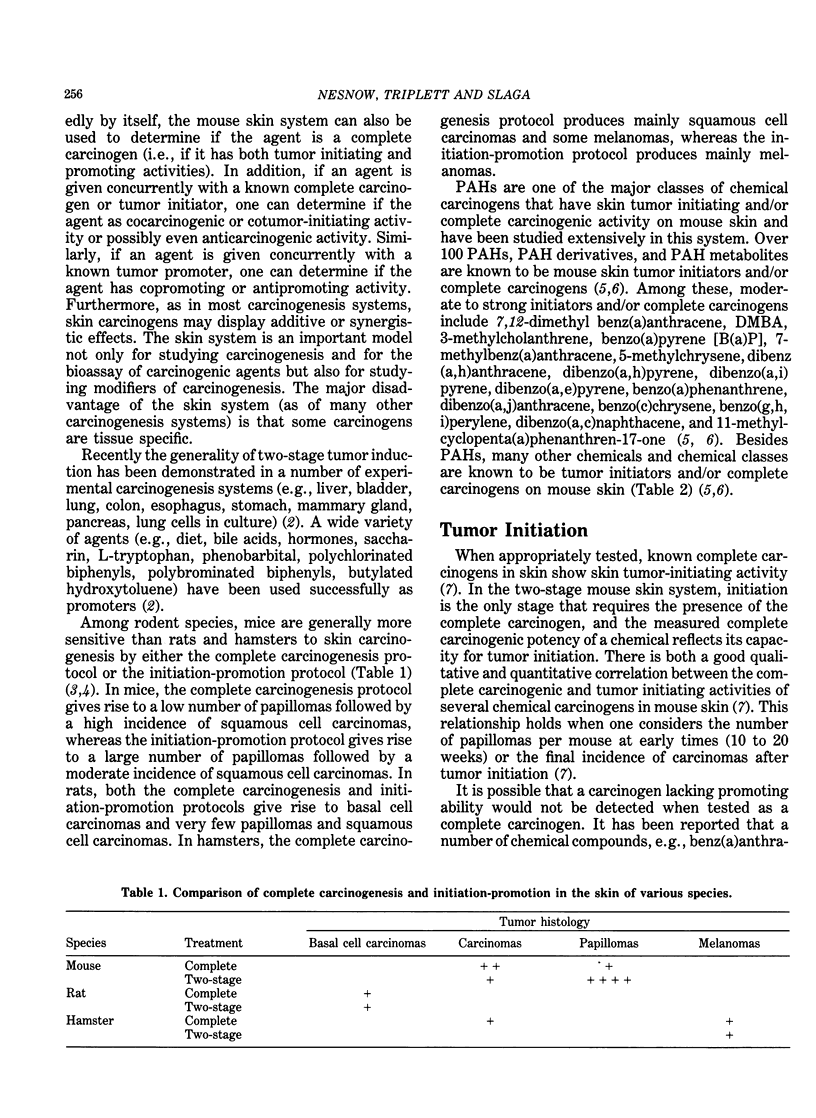
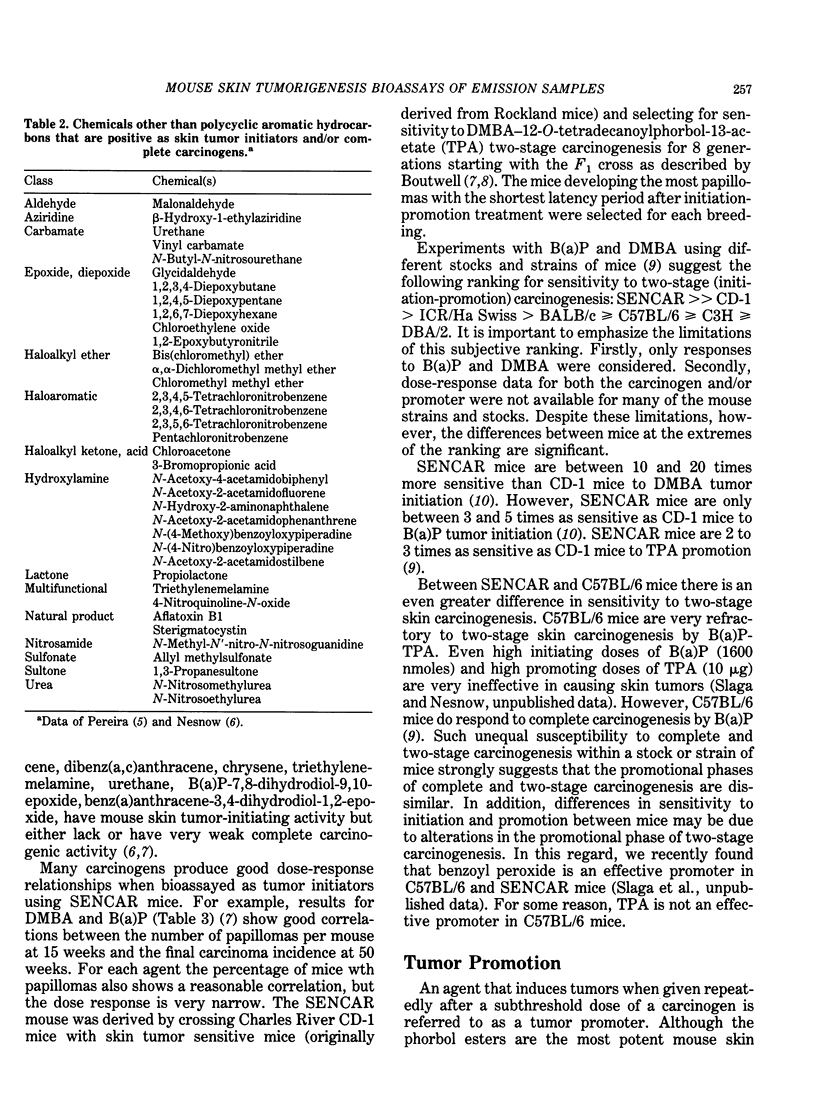
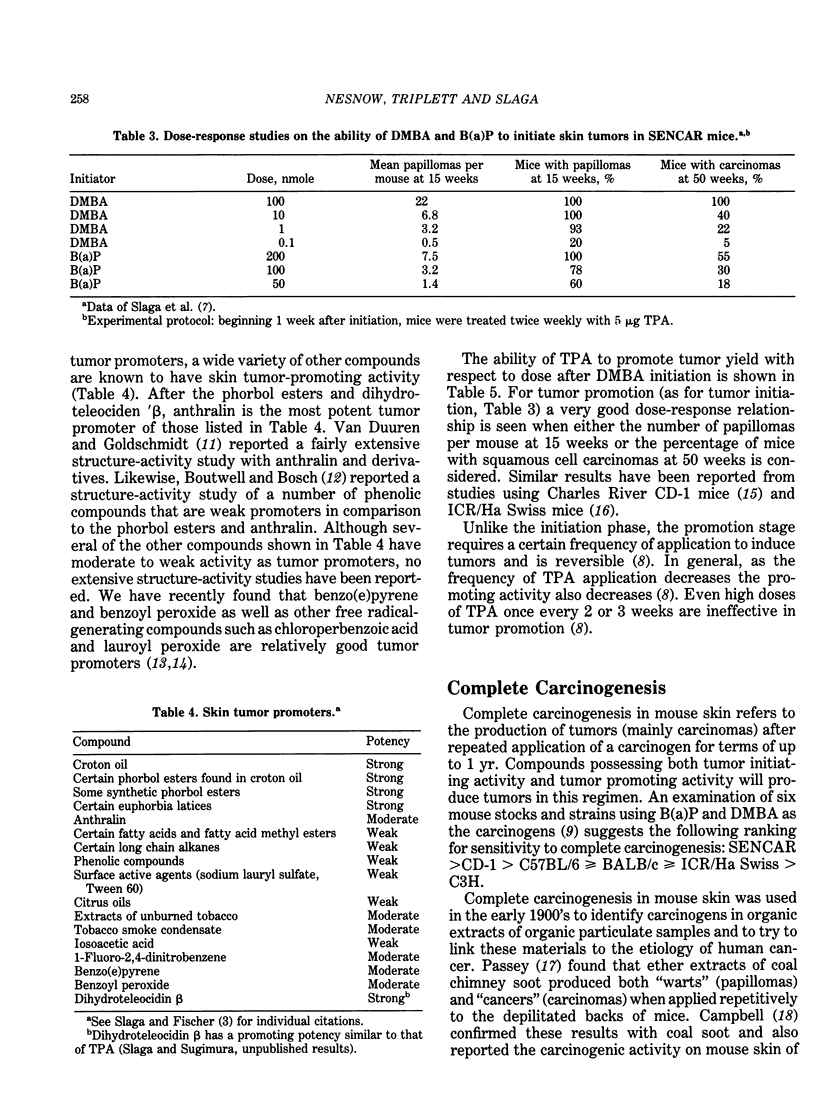
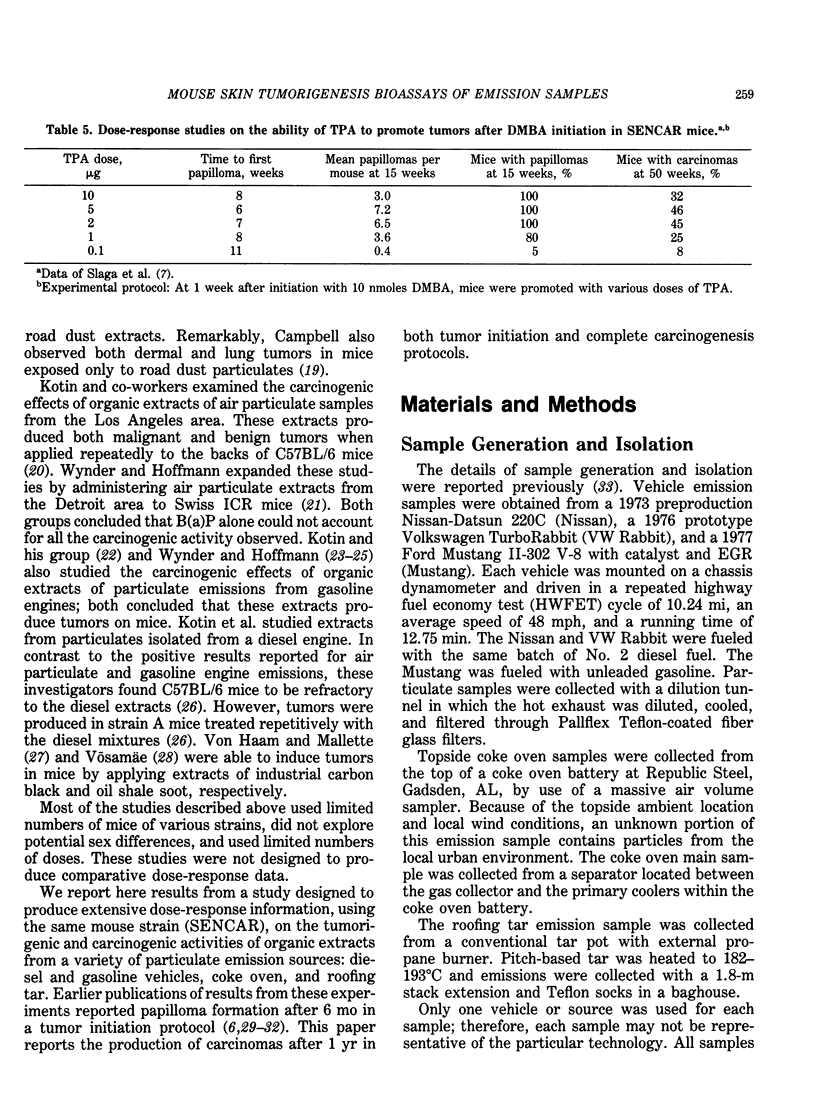
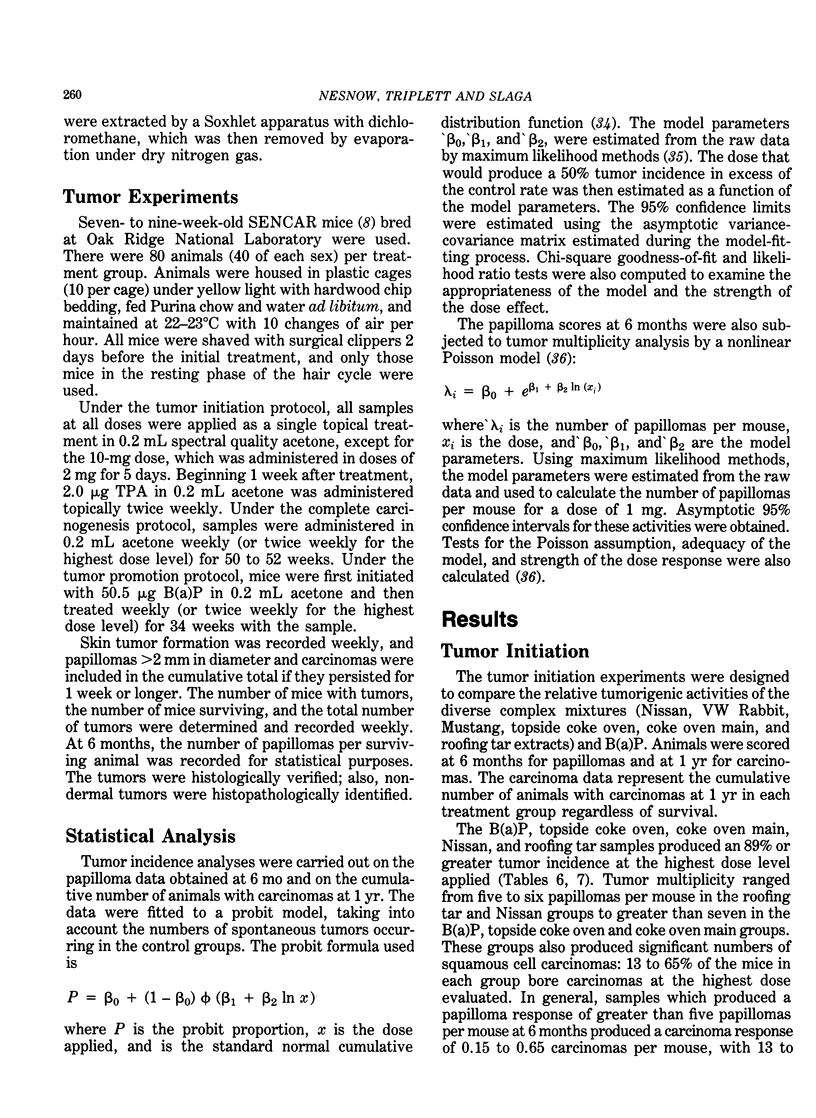
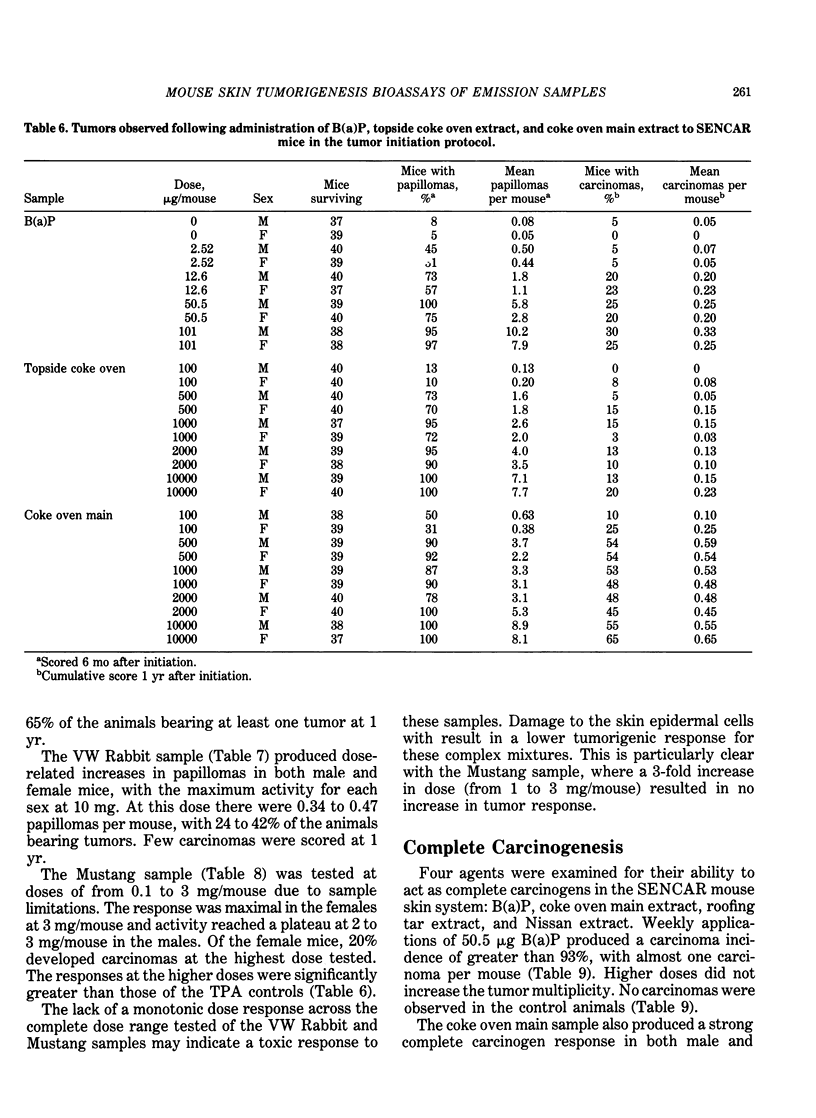
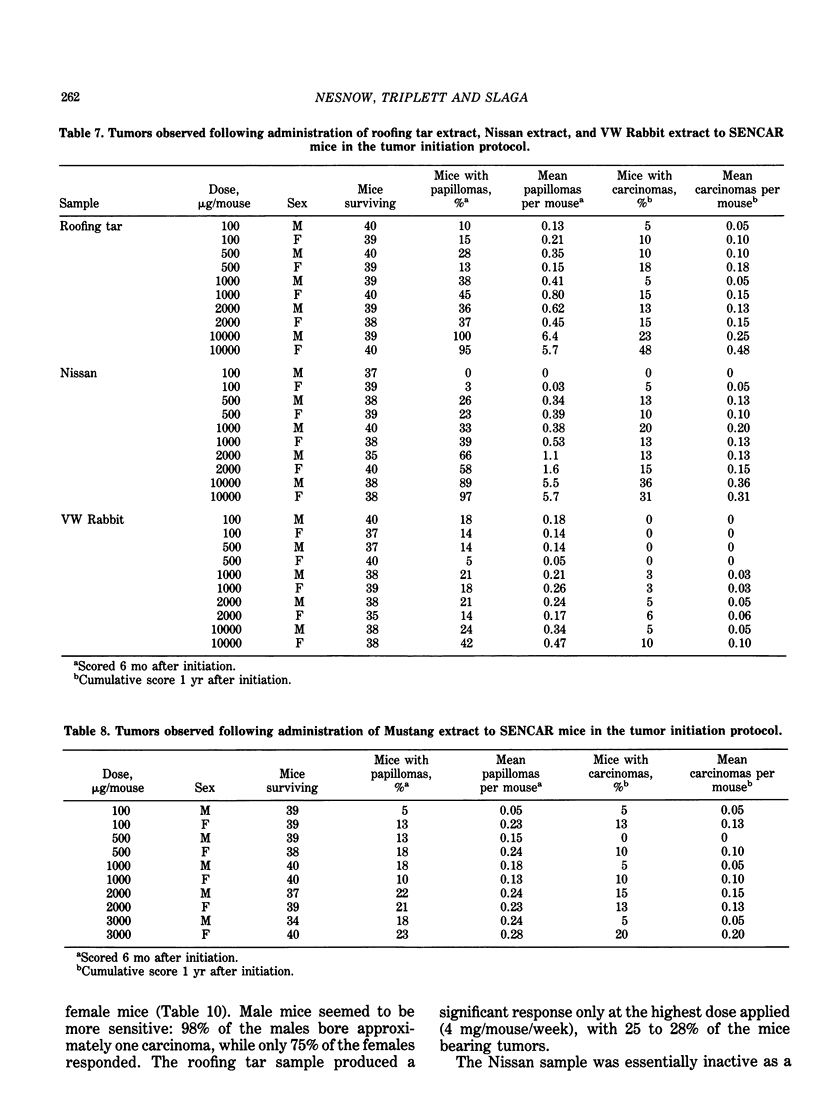
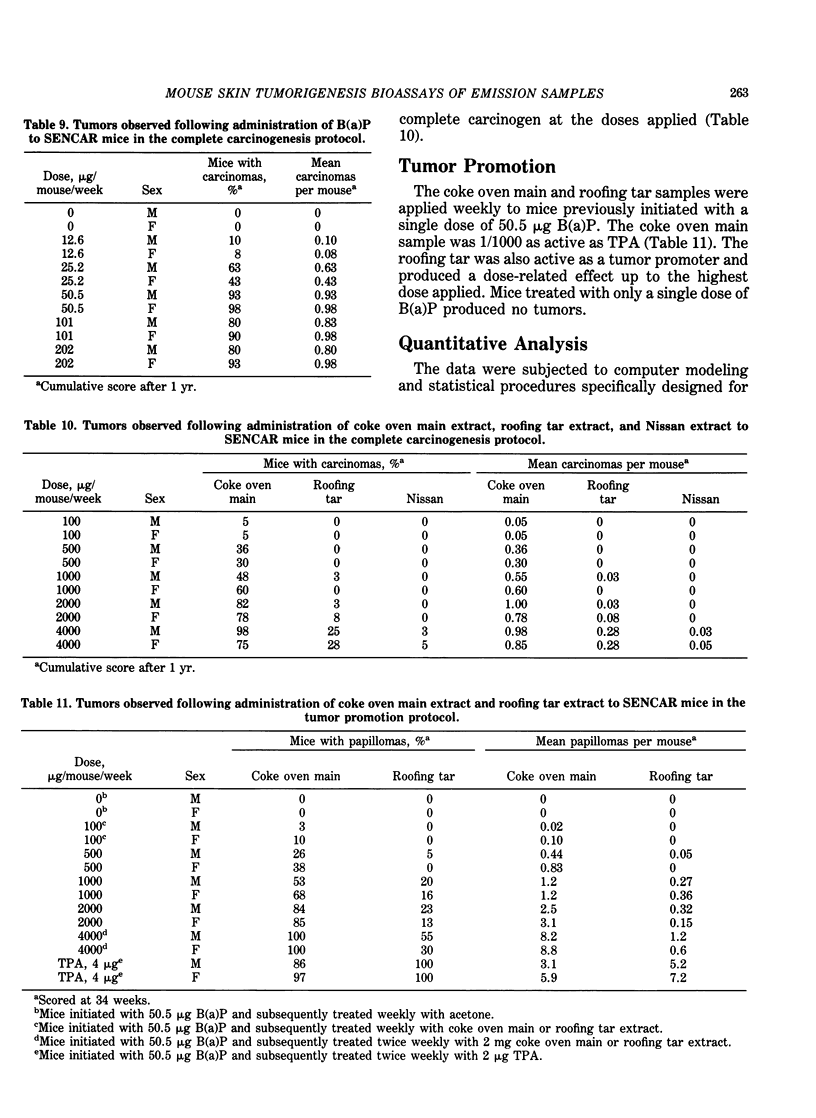
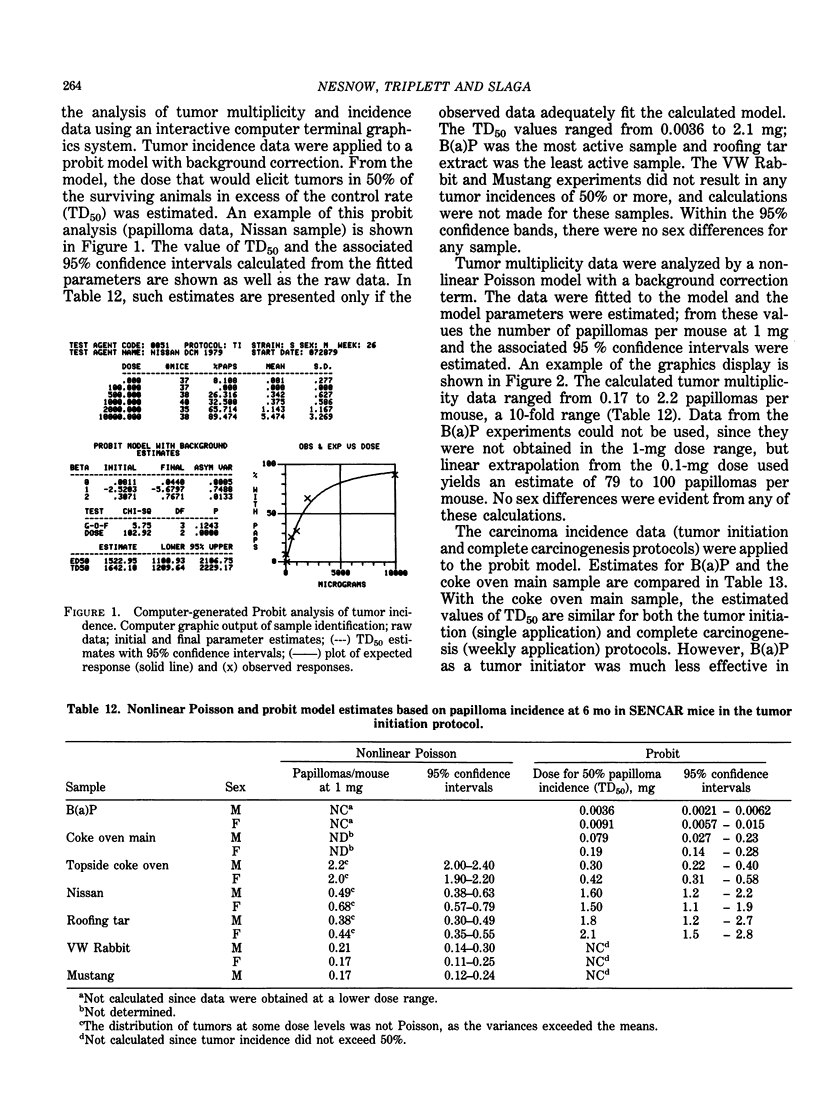
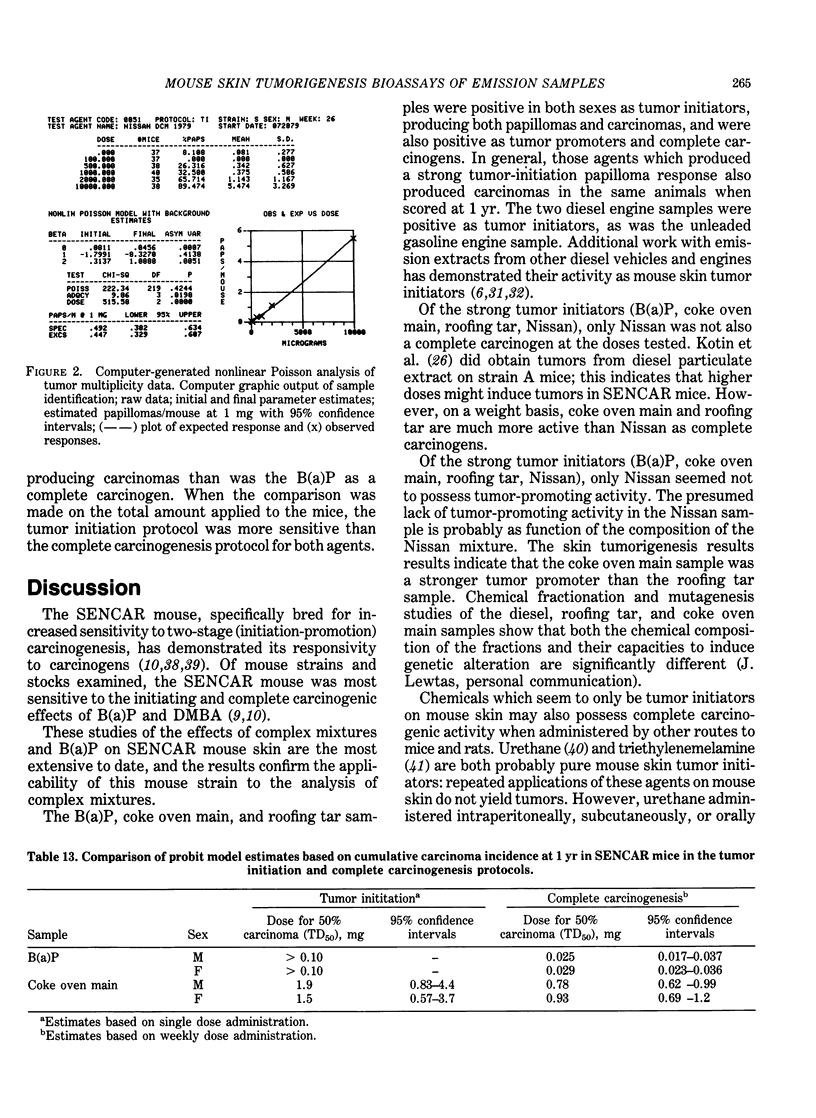
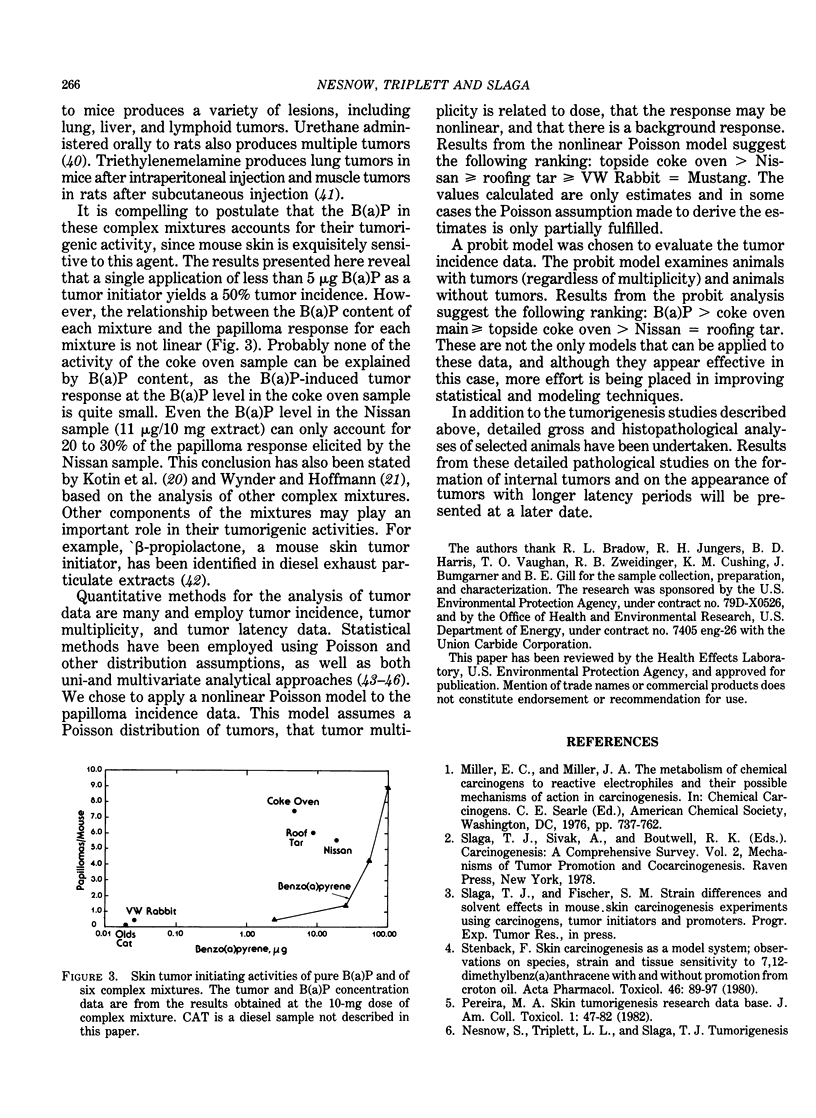
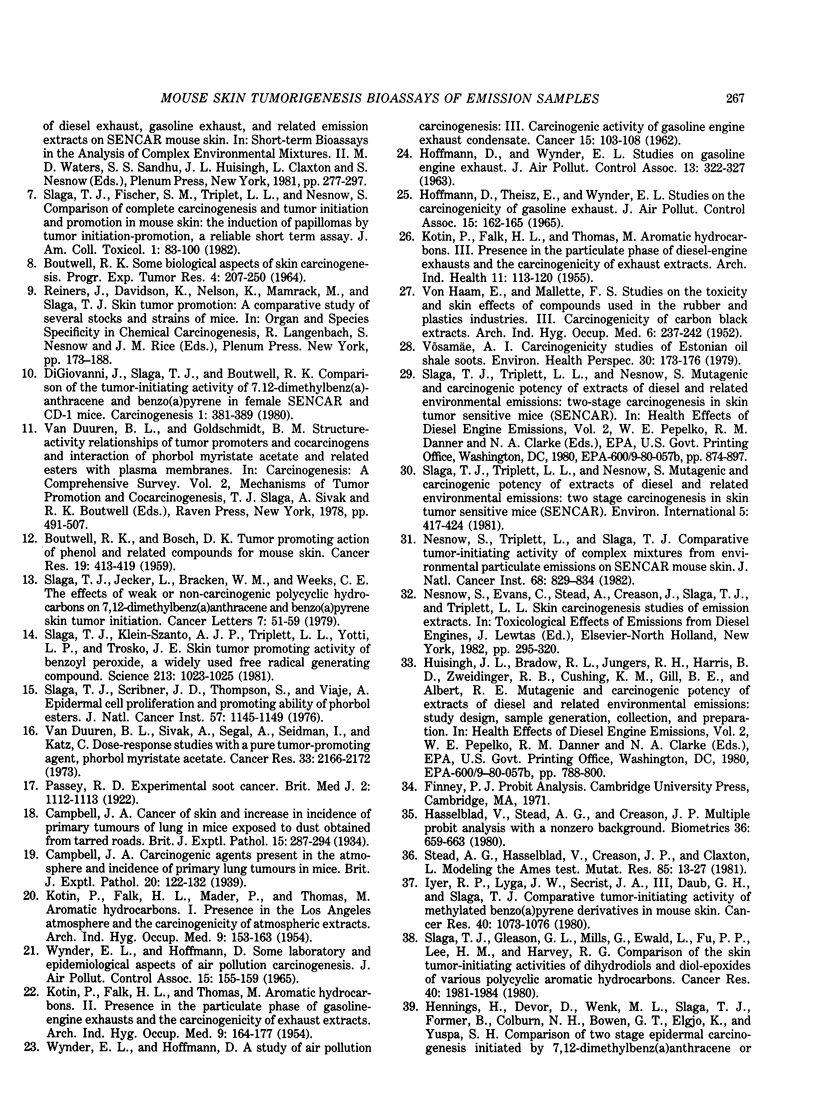
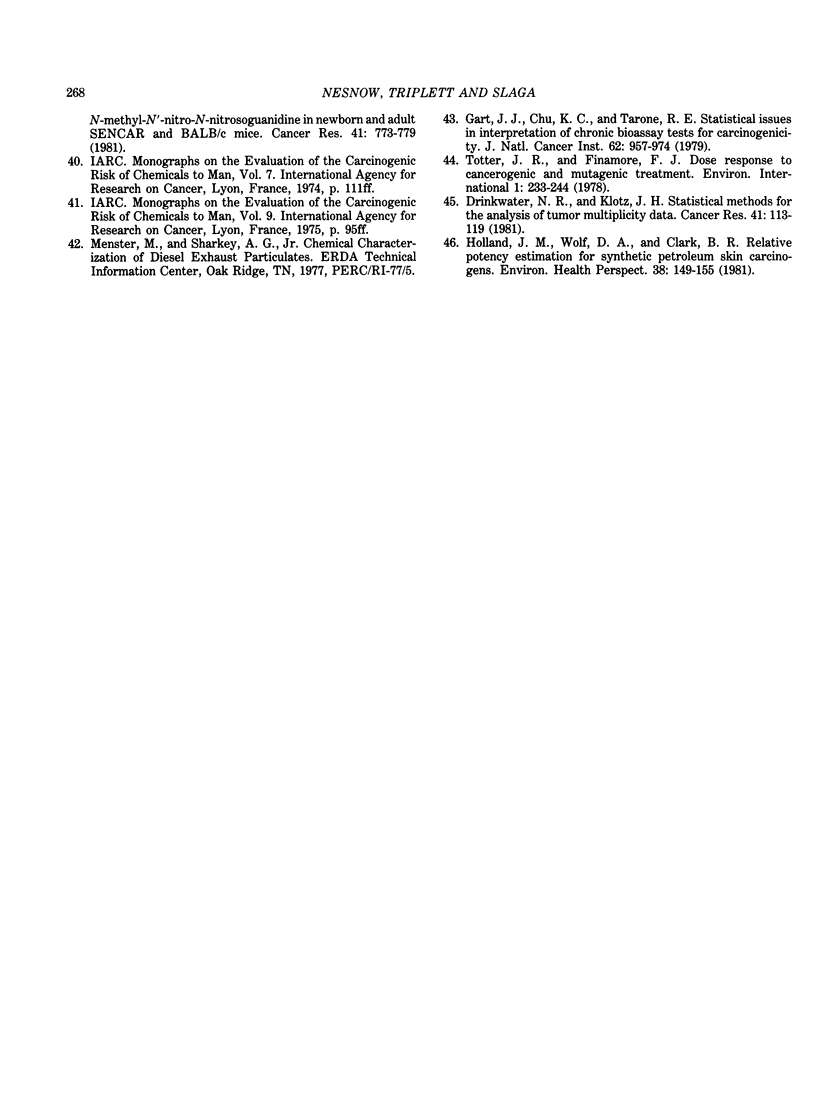
Selected References
These references are in PubMed. This may not be the complete list of references from this article.
- BOUTWELL R. K., BOSCH D. K. The tumor-promoting action of phenol and related compounds for mouse skin. Cancer Res. 1959 May;19(4):413–424. [PubMed] [Google Scholar]
- BOUTWELL R. K. SOME BIOLOGICAL ASPECTS OF SKIN CARCINOGENISIS. Prog Exp Tumor Res. 1964;4:207–250. doi: 10.1159/000385978. [DOI] [PubMed] [Google Scholar]
- DiGiovanni J., Slaga T. J., Boutwell R. K. Comparison of the tumor-initiating activity of 7,12-dimethylbenz[a]anthracene and benzo[a]pyrene in female SENCAR and CS-1 mice. Carcinogenesis. 1980 May;1(5):381–389. doi: 10.1093/carcin/1.5.381. [DOI] [PubMed] [Google Scholar]
- Drinkwater N. R., Klotz J. H. Statistical methods for the analysis of tumor multiplicity data. Cancer Res. 1981 Jan;41(1):113–119. [PubMed] [Google Scholar]
- Gart J. J., Chu K. C., Tarone R. E. Statistical issues in interpretation of chronic bioassay tests for carcinogenicity. J Natl Cancer Inst. 1979 Apr;62(4):957–974. [PubMed] [Google Scholar]
- HOFFMANN D., THEISZ E., WYNDER E. L. STUDIES ON THE CARCINOGENICITY OF GASOLINE EXHAUST. J Air Pollut Control Assoc. 1965 Apr;15:162–165. doi: 10.1080/00022470.1965.10468353. [DOI] [PubMed] [Google Scholar]
- HOFFMANN D., WYNDER E. L. STUDIES ON GASOLINE ENGINE EXHAUST. J Air Pollut Control Assoc. 1963 Jul;13:322–327. doi: 10.1080/00022470.1963.10468184. [DOI] [PubMed] [Google Scholar]
- Holland J. M., Wolf D. A., Clark B. R. Relative potency estimation for synthetic petroleum skin carcinogens. Environ Health Perspect. 1981 Apr;38:149–155. doi: 10.1289/ehp.8138149. [DOI] [PMC free article] [PubMed] [Google Scholar]
- Iyer R. P., Lyga J. W., Secrist J. A., 3rd, Daub G. H., Slaga T. J. Comparative tumor-initiating activity of methylated benzo(a)pyrene derivatives in mouse skin. Cancer Res. 1980 Apr;40(4):1073–1076. [PubMed] [Google Scholar]
- KOTIN P., FALK H. L., MADER P., THOMAS M. Aromatic hydrocarbons. I. Presence in the Los Angeles atmosphere and the carcinogenicity of atmospheric extracts. AMA Arch Ind Hyg Occup Med. 1954 Feb;9(2):153–163. [PubMed] [Google Scholar]
- KOTIN P., FALK H. L., THOMAS M. Aromatic hydrocarbons. II. Presence in the particulate phase of gasoline-engine exhausts and the carcinogenicity of exhaust extracts. AMA Arch Ind Hyg Occup Med. 1954 Feb;9(2):164–177. [PubMed] [Google Scholar]
- KOTIN P., FALK H. L., THOMAS M. Aromatic hydrocarbons. III. Presence in the particulate phase of diesel-engine exhausts and the carcinogenicity of exhaust extracts. AMA Arch Ind Health. 1955 Feb;11(2):113–120. [PubMed] [Google Scholar]
- Nesnow S., Evans C., Stead A., Creason J., Slaga T. J., Triplett L. L. Skin carcinogenesis studies of emission extracts. Dev Toxicol Environ Sci. 1982;10:295–320. [PubMed] [Google Scholar]
- Nesnow S., Triplett L. L., Slaga T. J. Comparative tumor-initiating activity of complex mixtures from environmental particulate emissions on SENCAR mouse skin. J Natl Cancer Inst. 1982 May;68(5):829–834. [PubMed] [Google Scholar]
- Slaga T. J., Gleason G. L., Mills G., Ewald L., Fu P. P., Lee H. M., Harvey R. G. Comparison of the skin tumor-initiating activities of dihydrodiols and diol-epoxides of various polycyclic aromatic hydrocarbons. Cancer Res. 1980 Jun;40(6):1981–1984. [PubMed] [Google Scholar]
- Slaga T. J., Jecker L., Bracken W. M., Weeks C. E. The effects of weak or non-carcinogenic polycyclic hydrocarbons on 7,12-dimethylbenz[a]anthracene and benzo[a]pyrene skin tumor-initiation. Cancer Lett. 1979 Jun;7(1):51–59. doi: 10.1016/s0304-3835(79)80076-2. [DOI] [PubMed] [Google Scholar]
- Slaga T. J., Klein-Szanto A. J., Triplett L. L., Yotti L. P., Trosko K. E. Skin tumor-promoting activity of benzoyl peroxide, a widely used free radical-generating compound. Science. 1981 Aug 28;213(4511):1023–1025. doi: 10.1126/science.6791284. [DOI] [PubMed] [Google Scholar]
- Slaga T. J., Scribner J. D., Viaje A. Epidermal cell proliferation and promoting ability of phorbol esters. J Natl Cancer Inst. 1976 Nov;57(5):1145–1149. doi: 10.1093/jnci/57.5.1145. [DOI] [PubMed] [Google Scholar]
- Stead A. G., Hasselblad V., Creason J. P., Claxton L. Modeling the Ames test. Mutat Res. 1981 Feb;85(1):13–27. doi: 10.1016/0165-1161(81)90282-x. [DOI] [PubMed] [Google Scholar]
- Stenbäck F. Skin carcinogenesis as a model system: observations on species, strain and tissue sensitivity to 7,12-dimethylbenz(a)anthracene with or without promotion from croton oil. Acta Pharmacol Toxicol (Copenh) 1980 Feb;46(2):89–97. doi: 10.1111/j.1600-0773.1980.tb02426.x. [DOI] [PubMed] [Google Scholar]
- VON HAAM E., MALLETTE F. S. Studies on the toxicity and skin effects of compounds used in the rubber and plastics industries. III. Carcinogenicity of carbon black extracts. AMA Arch Ind Hyg Occup Med. 1952 Sep;6(3):237–242. [PubMed] [Google Scholar]
- Van Duuren B. L., Sivak A., Segal A., Seidman I., Katz C. Dose-response studies with a pure tumor-promoting agent, phorbol myristate acetate. Cancer Res. 1973 Sep;33(9):2166–2172. [PubMed] [Google Scholar]
- WYNDER E. L., HOFFMANN D. A study of air pollution carcinogenesis. II. Carcinogenic activity of gasoline engine exhaust condensate. Cancer. 1962 Jan-Feb;15:103–108. doi: 10.1002/1097-0142(196201/02)15:1<103::aid-cncr2820150114>3.0.co;2-3. [DOI] [PubMed] [Google Scholar]
- WYNDER E. L., HOFFMANN D. SOME LABORATORY AND EPIDEMIOLOGICAL ASPECTS OF AIR POLLUTION CARCINOGENESIS. J Air Pollut Control Assoc. 1965 Apr;15:155–159. doi: 10.1080/00022470.1965.10468351. [DOI] [PubMed] [Google Scholar]


